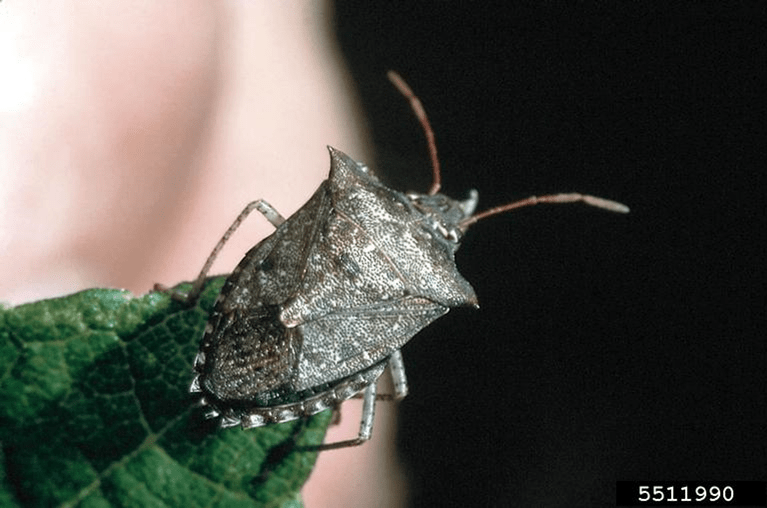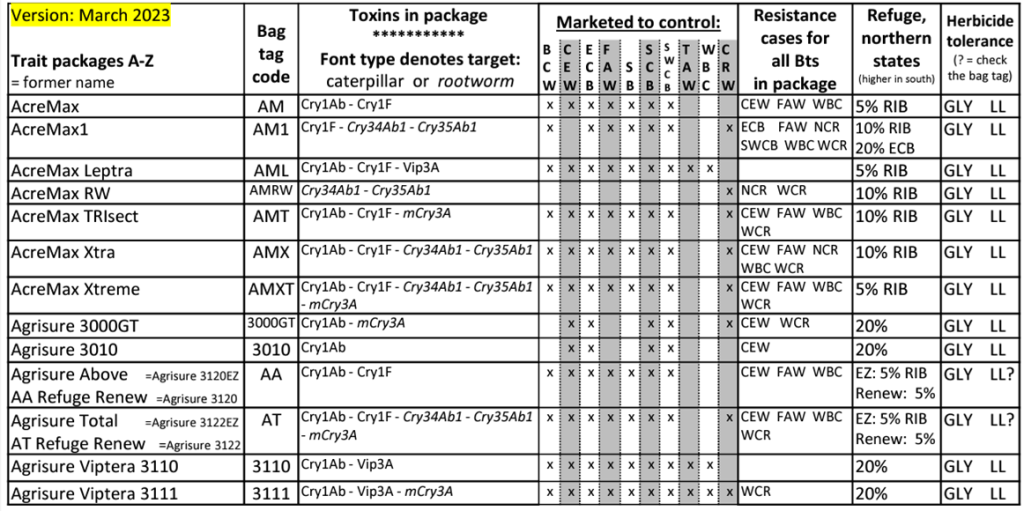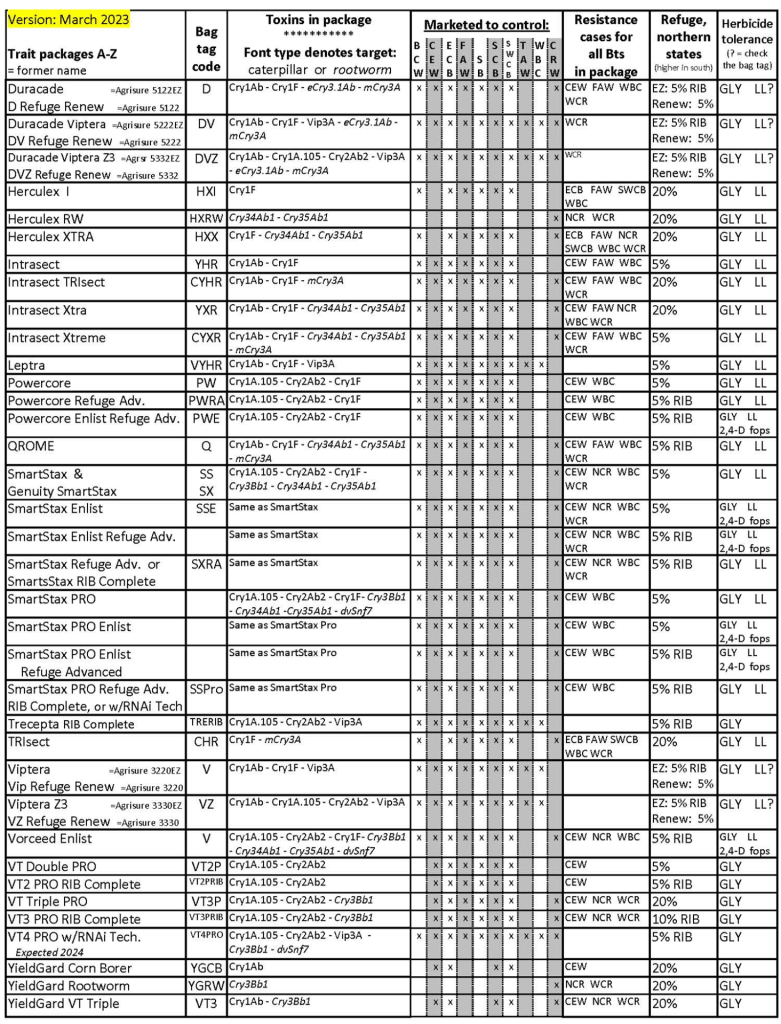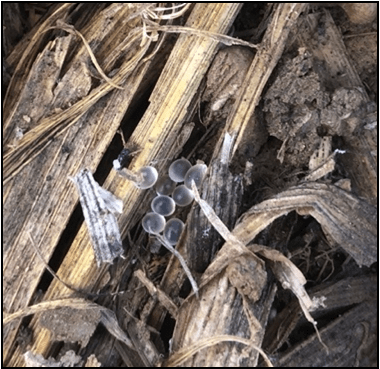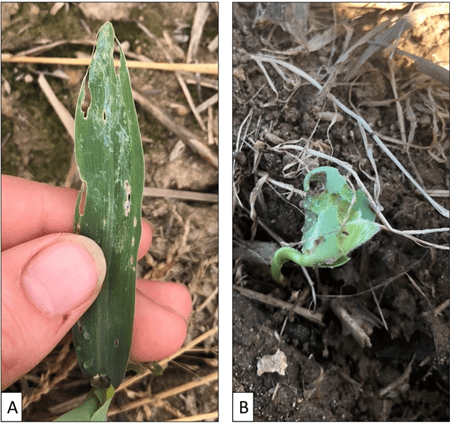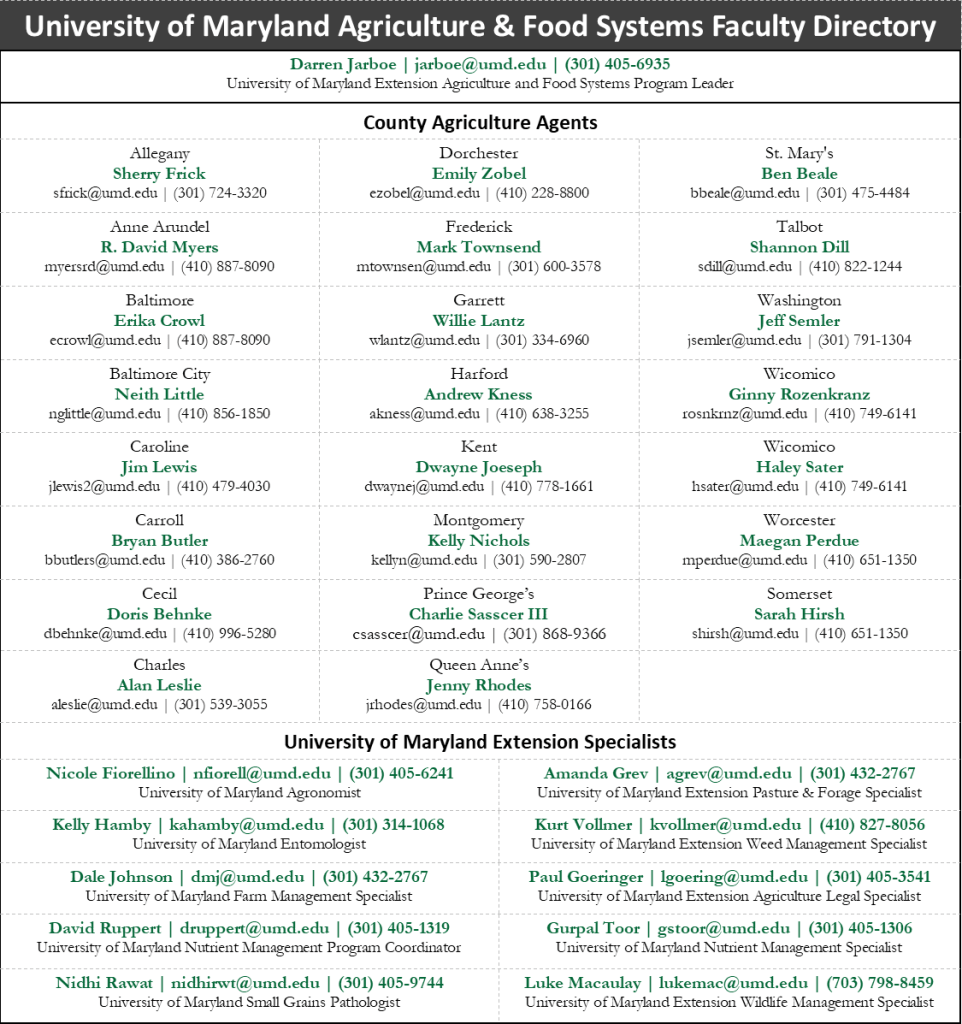Kelly Hamby, Associate Professor and Extension Specialist, University of Maryland and
David Owens, Extension Entomologist, University of Delaware
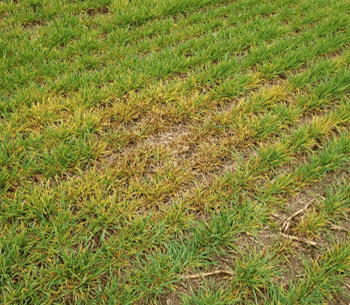
Last season, aphids transmitted an unusual amount of barley yellow dwarf virus (BYDV) to wheat and barley across the Delmarva Peninsula. BYDV is particularly important when it infects plants in the fall. Fall BYDV infections can stunt plants (noticed as early as green-up, Figure 1) and cause more serious yield loss than spring infections. Our most common small grain aphid species are bird cherry oat aphid (Figure 2) and English grain aphid, although bird cherry oat aphid are associated with greater and more severe incidence of BYDV.

Historically, planting after the Hessian fly-free date (Table 1) reduced the likelihood of fall BYDV infection. However, fly-free dates were calculated more than 100 years ago, and it is now not uncommon for our first killing frosts to occur in late October or even November. Long falls with milder weather allow more time for aphids to colonize fields and potentially transmit the virus. Small grains varieties vary in their susceptibility to BYDV, and planting varieties with at least some tolerance can help. Unfortunately, resistant varieties are not available in barley. Finally, monitoring and managing the aphid vectors may be necessary.
Identifying bird cherry-oat aphid: A magnifying hand lens is required to identify aphids. Bird cherry-oat aphid ranges from orange green to olive green to greenish black. Wingless individuals typically have a reddish orange patch around the base of the cornicles (tail pipes). Winged individuals tend to be very dark. Their legs, cornicles, and antennae are similar in color to their bodies and medium in size.
Monitoring and thresholds: Typically, monitoring aphids in the fall and at green-up provides the best chance of identifying and mitigating BYDV risk. Scout ten locations per field avoiding field margins and look at 1 ft of row in each, making sure to look at the crown (at or below ground level), at the stem, and on the undersides of leaves. English grain aphids tend to feed on the uppermost portions of the plants while bird cherry oat aphids tend to cluster on the lower portions, especially in barley.
University extension threshold recommendations vary by region. In southern states, 6 aphids/row-ft is considered justification for a treatment in the fall. North Carolina uses a threshold of 20 aphids/row-ft where BYDV has been a problem and cold weather is not in the 7 day forecast. For other small grains, consider increasing the threshold to 25-50 aphids per foot of row.
In 2022, one of the malting barley fields sampled averaged 17 aphids per row-ft in early November. Because of unusually warm winter weather in which average temperatures were greater than 38 degrees, aphid populations peaked in one field at 235 aphids per row-ft that had averaged 1.8 per row-ft in November. This highlights the need to regularly monitor aphid populations during periods of mild weather.
Natural enemies: A number of natural enemies feed upon or parasitize aphids and they often do a good job keeping aphid populations down. One natural enemy per 50-100 aphids should be sufficient to control aphid populations. In addition, they are good at finding aphids even when their populations are low. Small wasps that develop within aphids leaving behind “mummy” aphids (Figure 3A), lady beetles, lacewing larvae (Figure 3B), and flower fly larvae (Figure 3C) are especially common aphid natural enemies. Insecticides will also kill these natural enemies.

Insecticides: Seed treatments (e.g., Cruiser, Gaucho) provide some protection from fall aphids, but do not continue to provide protection into the spring and are not economic in years where aphids do not occur. Due to the differences in economics and BYDV susceptibility of malting barley varieties, seed treatments may be more useful than in feed barley or wheat. We generally recommend a foliar insecticide when aphid populations reach threshold. Small grain aphids are generally quite susceptible to insecticides. Pyrethroid products (e.g., Warrior) or a pyrethroid-neonicotinoid mix (e.g., Endigo, labeled for barley only) work well for aphid control.
Table 1. Hessian fly-free dates for Maryland and Delaware counties
| State | County | Date |
| Maryland | Allegany | Sept. 27 |
| Anne Arundel | Oct. 7 | |
| Baltimore | Oct. 2 | |
| Calvert | Oct. 8 | |
| Caroline | Oct. 7 | |
| Carroll | Sept. 28 | |
| Cecil | Oct. 3 | |
| Charles | Oct. 8 | |
| Dorchester | Oct. 9 | |
| Frederick | Oct. 2 | |
| Garrett | Sept. 20 | |
| Harford | Oct. 1 | |
| Howard | Oct. 2 | |
| Kent | Oct. 6 | |
| Montgomery | Oct. 4 | |
| Prince George’s | Oct. 7 | |
| Queen Anne’s | Oct. 7 | |
| Somerset | Oct. 10 | |
| St. Mary’s | Oct. 9 | |
| Talbot | Oct. 8 | |
| Washington | Oct. 1 | |
| Wicomico | Oct. 10 | |
| Worcester | Oct. 11 | |
| Delaware | Kent | Oct. 8 |
| New Castle | Oct. 3 | |
| Sussex | Oct. 10 |
More information:
Kleczewski, N., Cissel, B., Whalen, J. 2016. Barley Yellow Dwarf Management in Small Grains. http://cdn.extension.udel.edu/wp-content/uploads/2015/10/14051904/BYDV-Final-Draft-9-12-16.pdf.
Flanders, K., Herbert, A., Buntin, D., Johnson, D., Bowen, K., Murphy, J. F., Chapin, J., Hagan, A. 2006. Barley Yellow Dwarf in Small Grains in the Southeast. https://entomology.ca.uky.edu/files/efpdf1/ef150.pdf.
Owens, D. and B. Cissel. Insect Control in Small Grains (for Grain only) – 2020. https://www.udel.edu/content/dam/udelImages/canr/pdfs/extension/sustainable-agriculture/pest-management/Insect_Control_in_Small_Grains_2020.pdf.
